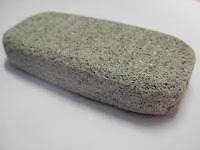Pumice is a light and porous stone that is usually ejected from volcanoes. The stone was once a part of the volcano’s lava, but it is charged with steam and is expanded after reaching the surface. Also, it would sometimes appear in its powdered form called the pumicite.
How Pumice is Made
The pumice stone is made after a rock inside the mouth of the volcano is highly pressurized and is flung out of the volcano violently. The porous appearance of the pumice is caused by the fast cooling and depressurization that happens in the stone’s properties as it gets depressurized upon reaching the surface out of the volcano’s mouth.
Once it is going through its depressurization stage, the bubbles in the pumice will start to appear as the gases found in the property of the stone begins to lower their solubility. You can compare this process with how carbonated drinks would often form bubbles as you open its container, which is usually a bottle or a can. The carbon dioxide found in both the stone and the carbonated drink depressurized and appears at the surface of both of them in the form of bubbles, although in the stone’s case, the bubbles will create pores on the pumice.
The size of the pumice’s pores can vary from stone to stone, with some having grains that are 2 to 3 millimeters in size. However, if the stones have grains that are smaller than 2 millimeters, then it is considered as a pumicite.
Uses of Pumice
Because of the many uses of pumice, it is considered a highly sought-after stone. Thankfully, the Earth is abundant with these stones, so the price for it wouldn’t go up, unlike rarer stones like diamonds or emeralds. Pumice stones are usually found in places where there are plenty of active volcanoes, like Asia, Europe, North America, South America, New Zealand, and Africa.
In ancient times, the people in China have used it to cure various mental illnesses. They would usually use ground pumice and mixed with tea to heal patients who are suffering from insomnia, anxiety, headaches, or nausea. During the 18th century, doctors would utilize ground pumice as a topical medicine to treat skin ulcers and scars. The powdered pumice is said to be also effective in treating cancer in the gallbladder because it can soften the nodules found in the organ.
Another use for pumice is for skincare, wherein people would rub the stones in their bodies to brush off any dead skin cells or dead hair that may cause infections. Before razors were invented, it was theorized that pumice stones were used to remove hair in any part of the body, and they were also utilized as a scrubber to remove calluses on the bottom of the feet or the sole. In addition, these stones were turned into powder and were applied on the teeth to make them whiter. In recent years, ground pumice is mixed with various ingredients to make pumice soap, which is supposed to whiten the skin while also exfoliating skin cells. Because of its effectiveness in reducing dead skin cells in the body, pumice stones are still used today for various personal care purposes.
In fashion, pumice stones are utilized in stone-washing, a process that involved rubbing the pumice in the exterior of the jeans to make them look distressed and worn. Stone-washing jeans can also make the fabric much softer and more comfortable than regular unworn jeans. On the other hand, the stones are also found in construction materials such as concrete and cinder blocks because of their durability and excellent insulating properties. There is another pumice-based material used for construction called pozzolan that is typically mixed with lime in order to create a lightweight concrete that looks like plaster because of its smoothness.
For horticulture, pumice stones are mixed with soil to make plants that are situated there to grow healthier. Pumice is effective in improving the quality of the soil because of its pores that traps and stores water and gases that are needed by the plants. Moreover, these pumice stones prevent insects and fungi from invading the plants, as they are not considered as a natural habitat for these parasites.
Additional reading:
Pumice (Wikipedia)

